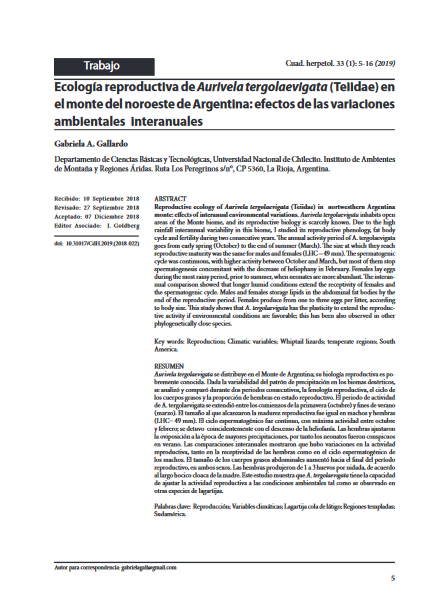Ecología reproductiva de Aurivela tergolaevigata (Teiidae) en el monte del noroeste de Argentina
Licencia: Creative Commons (by-nc)
Autor(es): Gallardo, Gabriela
Aurivela tergolaevigata inhabits open areas of the Monte biome, and its reproductive biology is scarcely known. Due to the high rainfall interannual variability in this biome, I studied its reproductive phenology, fat body cycle and fertility during two consecutive years. The annual activity period of A. tergolaevigata goes from early spring (October) to the end of summer (March). The size at which they reach reproductive maturity was the same for males and females (LHC = 49 mm). The spermatogenic cycle was continuous, with higher activity between October and March, but most of them stop spermatogenesis concomitant with the decrease of heliophany in February. Females lay eggs during the most rainy period, prior to summer, when neonates are more abundant. The interannual comparison showed that longer humid conditions extend the receptivity of females and the spermatogenic cycle. Males and females storage lipids in the abdominal fat bodies by the end of the reproductive period. Females produce from one to three eggs per litter, according to body size. This study shows that A. tergolaevigata has the plasticity to extend the reproductive activity if environmental conditions are favorable; this has been also observed in other phylogenetically close species.
[2019]
Compartir:
Una vez que el usuario haya visto al menos un documento, este fragmento será visible.


